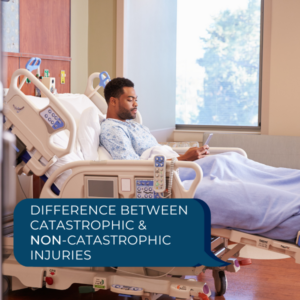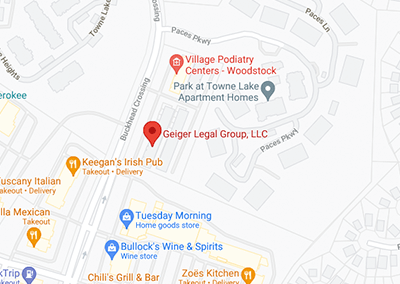What Is the Difference Between a Catastrophic and Non-Catastrophic Injury?

Some accidents result in minor injuries, such as scrapes and bruises. Others can lead to severe injuries that permanently alter a victim’s life, preventing them from working or living independently. These injuries are considered catastrophic and often require life-long medical treatment.
But what is the difference between catastrophic and non-catastrophic injuries? Geiger Legal Group, LLC is here to explain how these injuries differ and what they could mean for your catastrophic injury case. To learn more, contact our office for a free consultation with a catastrophic personal injury attorney.
Difference Between Catastrophic and Non-Catastrophic Injuries
The important distinction between a catastrophic and non-catastrophic injury is whether there is any long-term impact on the ability to work or live independently. Someone who suffers a non-catastrophic injury after an accident is expected to fully recover and regain all of their pre-accident abilities.
What Is a Catastrophic Injury?
A catastrophic injury is generally considered a severe, permanent injury that prevents someone from working or participating in other daily activities. The most common catastrophic injuries affect the spine, spinal cord, or brain. However, other injuries are considered catastrophic if they permanently and significantly impact the quality of life.
Common examples of accident-related catastrophic injuries include:
- Traumatic brain injuries — A traumatic brain injury (TBI) often results from a violent hit to the head. A severe TBI can impact the body’s function and lead to mobility issues. A brain injury can also alter a victim’s personality, memory, and cognitive functions.
- Spinal cord injuries — Severe spinal cord injuries are frequently permanent and can lead to paralysis and other medical conditions.
- Amputated limbs — Amputation by surgery is often necessary after a limb has been crushed or partially severed. People who lose a limb typically experience mobility issues, painful symptoms, and emotional trauma.
- Severe burns — Second- and third-degree burns can cause disfiguring scars and significant nerve damage. Scarred skin can also interfere with mobility.
- Loss of sight or hearing — Some catastrophic accidents leave victims unable to see or hear, significantly impacting their ability to return to work or live independently.
- Mental health disorders — Traumatic accidents can lead to post-traumatic stress disorder (PTSD) and other mental health conditions. People with mental illnesses frequently require therapy and extensive medical treatment to recover.
What Is a Non-Catastrophic Injury?
A non-catastrophic injury can be severe but will heal relatively quickly with few long-term effects. Cuts, bruises, some broken bones, and other minor injuries are generally considered non-catastrophic.
Contact Our Experienced Personal & Catastrophic Injury Lawyers Today
The personal injury lawyers at Geiger Legal Group, LLC can help you pursue compensation after a traumatic accident. Contact our experienced catastrophic injury lawyers today to schedule a free case review.














